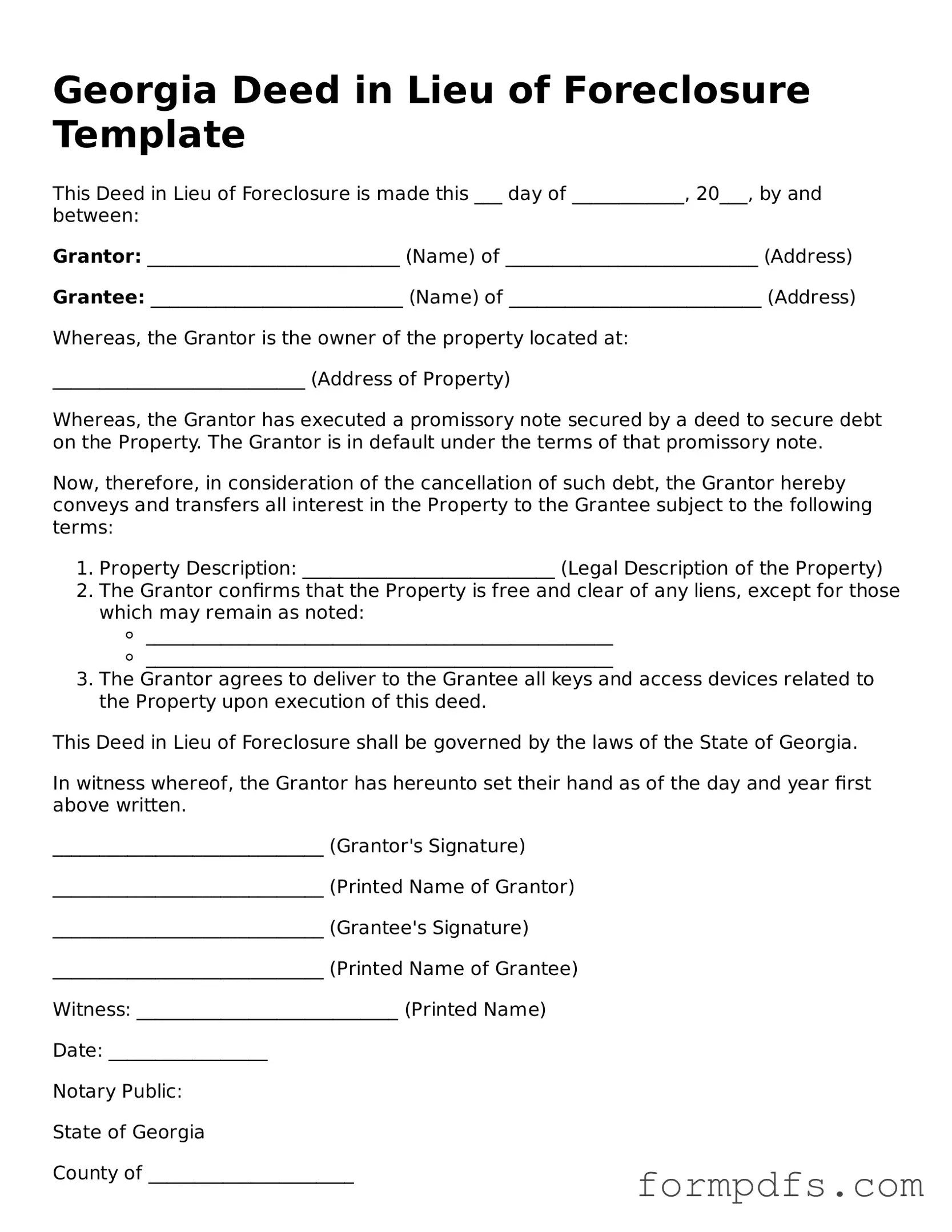What is a Deed in Lieu of Foreclosure in Georgia?
A Deed in Lieu of Foreclosure is a legal document that allows a homeowner to voluntarily transfer ownership of their property to the lender to avoid foreclosure. In Georgia, this process can help homeowners eliminate the burden of mortgage debt and avoid the lengthy and costly foreclosure process. By agreeing to this arrangement, the homeowner typically relinquishes all rights to the property, and the lender agrees to forgive the remaining mortgage balance, although terms can vary by lender.
What are the benefits of choosing a Deed in Lieu of Foreclosure?
One major benefit is that it can significantly reduce the negative impact on the homeowner's credit score compared to a foreclosure. The process is generally quicker and less expensive than going through foreclosure. Additionally, it allows homeowners to walk away from their mortgage debt without the hassle of a foreclosure sale. In some cases, lenders may also offer relocation assistance or other forms of financial support to help homeowners transition to new housing.
Are there any risks associated with a Deed in Lieu of Foreclosure?
Yes, there are potential risks. Homeowners may still be responsible for any outstanding debts, such as property taxes or homeowners association fees, even after the deed is transferred. Additionally, the lender may require the homeowner to provide financial documentation, which could involve disclosing personal financial information. It’s also important to ensure that the deed is properly executed to avoid any future legal complications. Consulting with a qualified professional can help mitigate these risks.
How do I initiate a Deed in Lieu of Foreclosure in Georgia?
The first step is to contact your lender to express your interest in a Deed in Lieu of Foreclosure. They will provide you with the necessary forms and information about the process. It’s advisable to prepare your financial documents, as lenders will typically require proof of your financial situation. After reviewing your application, the lender will assess whether to accept the deed. If approved, both parties will sign the deed, and it will be recorded with the local county clerk’s office.
